
Teaching and learning resources for the construction industry with NVQ and Diploma Assessment Criteria
The learner will:
2. be able to set out and build half brick thick return corners (Quoins).
The learner can:
2.1 use Personal Protective Equipment (PPE) appropriate to building half brick thick return corners (Quoins)
2.2 select the tools, equipment and materials required to build half brick thick return corners (Quoins)
2.3 set up a mortar board and stack the required number of bricks
2.4 set out and build half brick thick return corners (Quoins) to given specifications
2.5 finish the brick work to given specifications.
The learner will:
3. be able to set up and maintain a clean and safe working environment.
The learner can:
3.1 set up the work area safely
3.2 maintain a clean and safe working area following health and safety guidelines
3.3 clear work area of surplus materials and debris on completion of the jobs
3.4 clean all tools and equipment ready for re-use.
This guidance document sets out the aspects of this unit where the demonstration of skills, knowledge and understanding to the required competence must be assessed.
It indicates where assessment opportunities occur within the work plans, assignments, student’s handbook and question paper.
Each student must work individually to complete all of the practical activities, assignments, completion of their handbook and the unit question paper.
Where team activities are carried out, each student must be assessed in the lead role.
Students must carry out all work activities safely.
Correct PPE should be selected and worn, or used, as appropriate.
There must be no risks to self or others and no risk of environmental pollution.
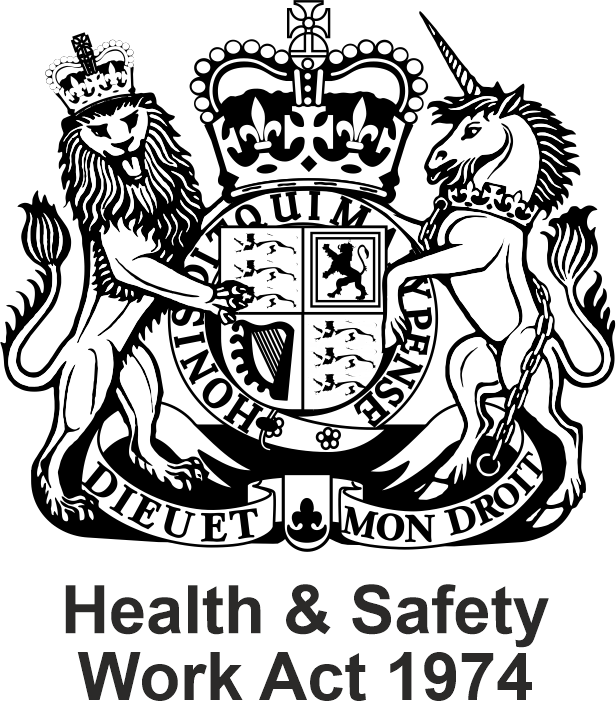
The following Safety Rules should apply:
1. Before, during and after carrying out any work, the workplace must be clean and tidy to prevent tripping and falling
2. Organise the work and set up tools and equipment
3. Check all equipment is in good working order.
Setting up to carry out your work effectively and efficiently can save time and risk of injury to yourself and others
4. Always wear protective clothing:
Gloves when handling materials and components
Boots in case of impact injury
Mask in dusty atmospheres
Ear defenders in noisy conditions
Goggles to protect eyes from flying debris
Helmets at all times when on a building site
5. Be aware of emergency procedures in the event of an accident:
Who the first aider is
Where the first aid box is located
How to fill in the accident book
Report accidents to the person in charge
6. In the event of fire:
Carry out the correct emergency procedures for calling for help and evacuate the building

Are You In Control
This activity looks at the how bricks and blocks are laid to line in terms of their:
· Bonding
· Accuracy
· Finish
Outcomes
By the end of this activity, students should be able to:
· Mark Out a Gauge Rod for Brick Courses
· Mark Out a Gauge Rod for Block Courses
· Select and Name Correct Tools and Equipment for Laying Bricks and Blocks to Line
· Mix Mortar
· Work Out the Required Number of Bricks/blocks/bats/closers
· Lay Bricks and Blocks to Line and Gauge
· Check That Levels, Face Deviation and Perpends Are Within Allowable Tolerances
· Point Up the Joints on Facework

The assessor will ask you if you’re ready to do the assessment, if so you will need to study the working drawing above, to identify and list all the P.P.E., Materials, Tools and Equipment required to
build a Half Brick Thick Wall

Selected of P.P.E.
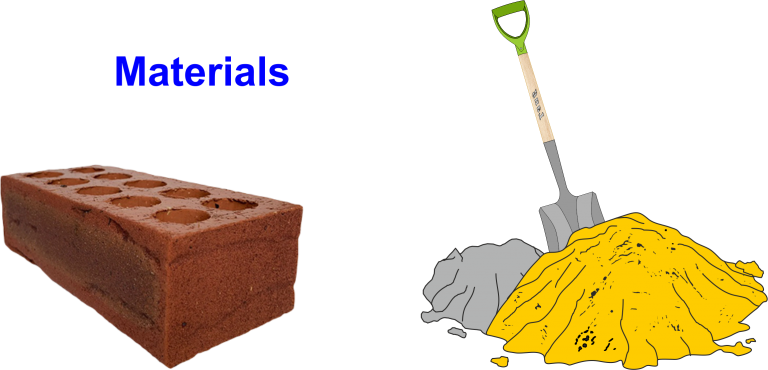
Materials & Tools
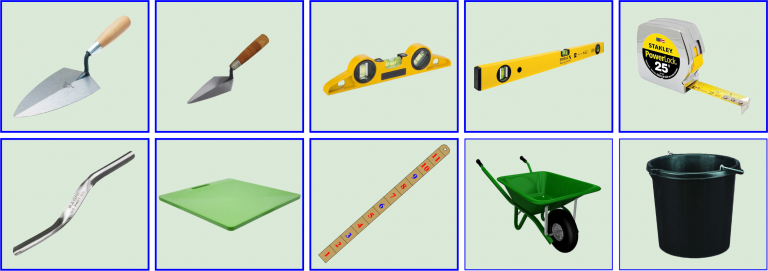
Tools and Equipment
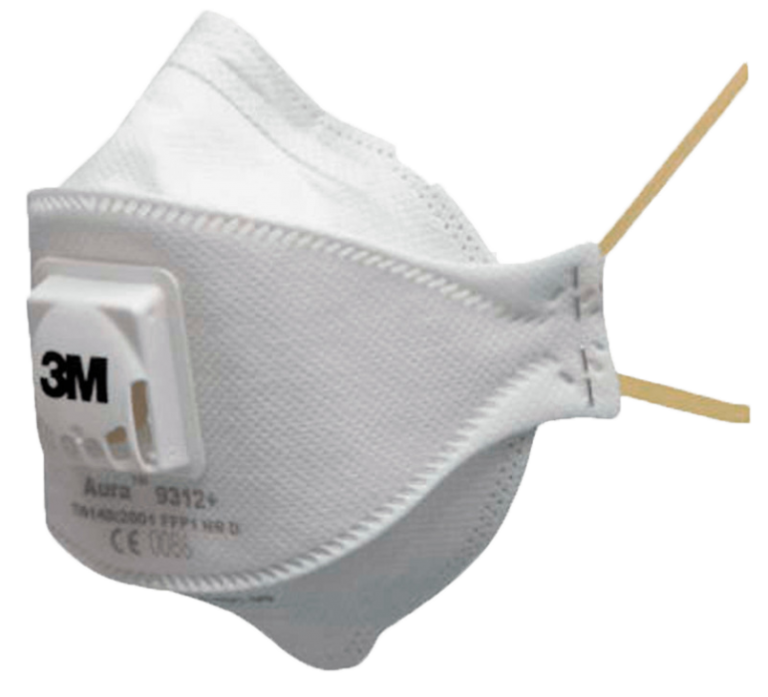
The first stage in building a wall is to sweep the assessment area ensuring that you clear away debris where the bricks are going to be laid.
Remembering to use your P.P.E., normally assessment areas in a training centre are very dusty you will need to wet the surface area down with water before using your sweeping brush.


To strike the Base Line for this assessment you will need two bricks, line and pins and a pencil.
Unwind a length of string line sufficient to span the assessment area , wrap the string line around brick 2 to 3 times then run a taut string (Ranging Line) to the length of your face line.
Using a pencil marks the start and end of the string line, using a long straight edge placing the edge onto both marks, complete the Base Line, this line represents the face of the Half Brick Return Corner (Quoin).
If you haven’t got a long straightedge you need to do two additional marks from both ends to the length of your level and strike the line between both marks at each end.
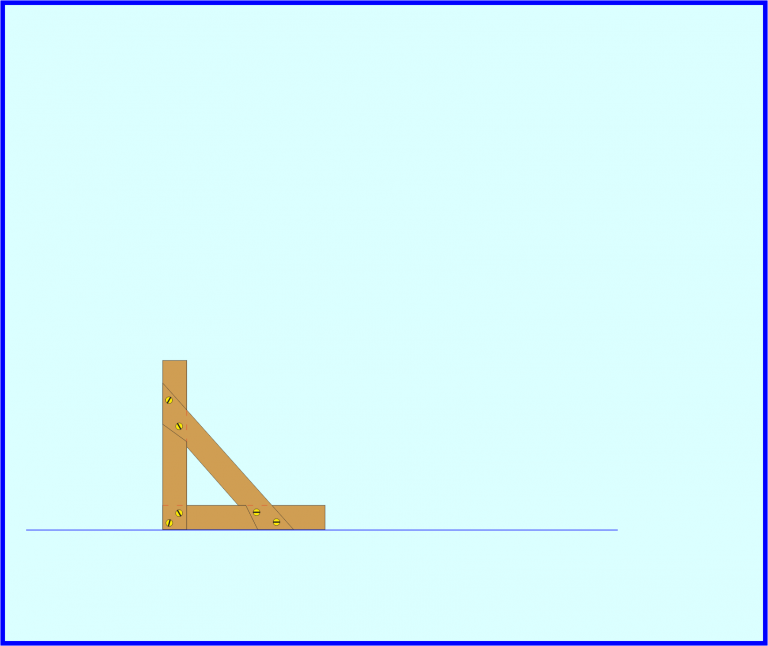
The next stage is to set out the return of the Half Brick Return Corners (Quoin), you need a building square for this stage not forgetting to check the building square for accuracy.
For additional information click on the link below:
Place the corner of the builders square onto the corner of the Brick Corner (Quoin) where you wish to start your Brick Return Corner and onto your baseline.
To complete the right angle of your Brick Return Corner you need to place your long straightedge next to the building square to form the right angle which will be your return on your half brick corner.
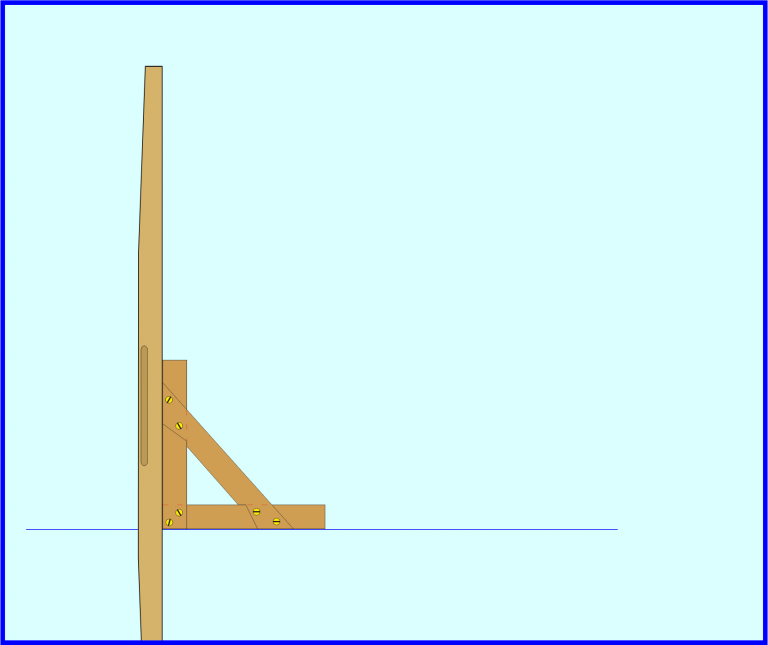
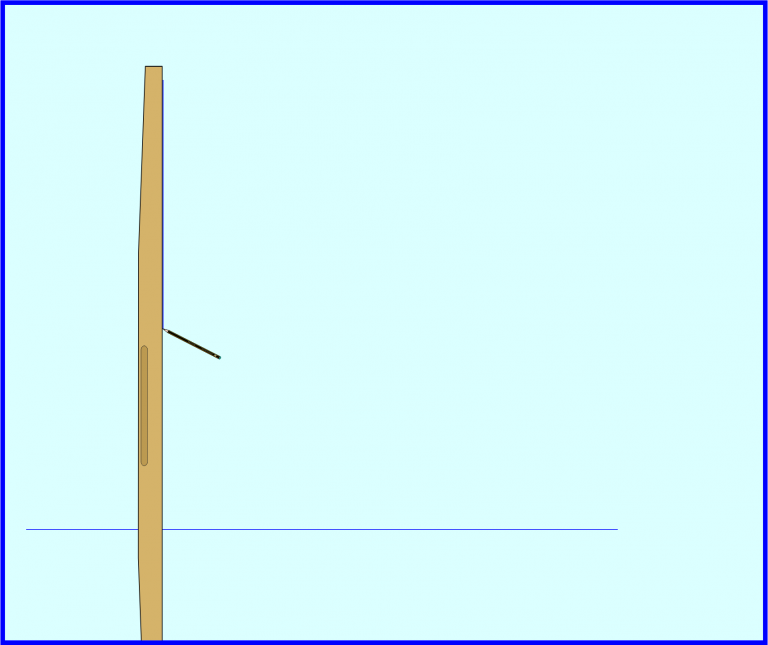
Remove the building square carefully without moving the straightedge, holding the straightedge to prevent movement strike aligned along the straight edge.
The setting out lines need to extend beyond the corner and return wall this will enable you to see them when the mortar bed is laid.
Alternative method if you haven’t got a long enough straightedge is to unwind a length of string line sufficient to span the assessment area.
Wrap the string line around brick 2 to 3 times then run a taut string to the length of your Return Corner.
Placing the building squarely on the baseline move one end of the ranging line so it’s in line with the building square.
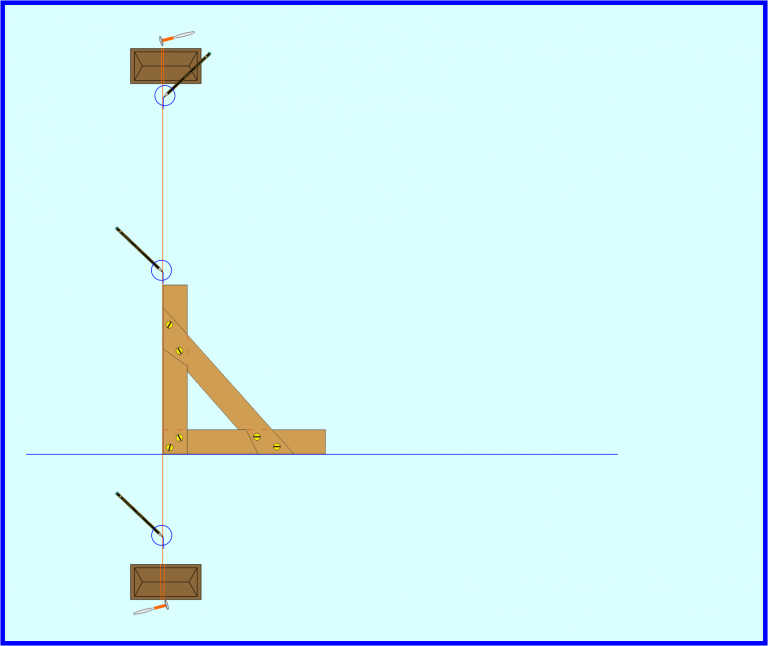
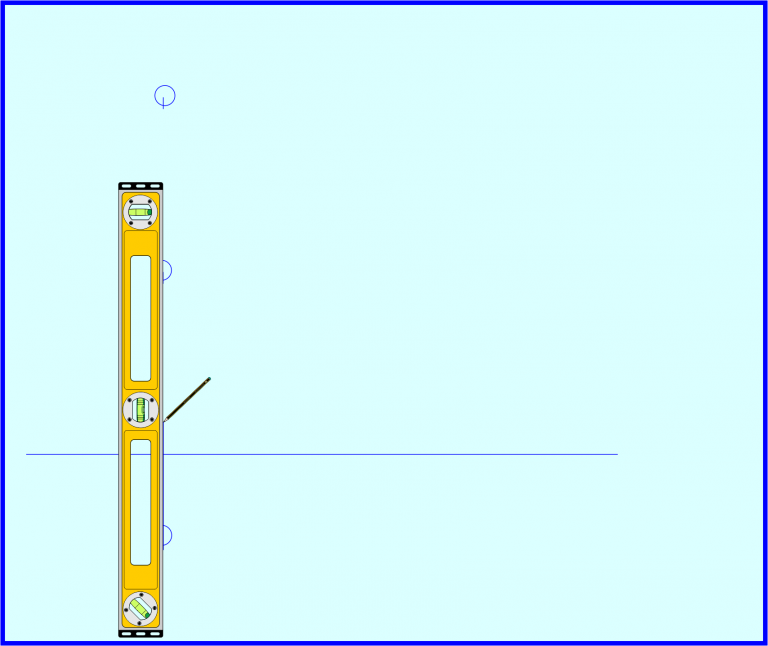
Carefully remove the building square without moving the ranging line.
You will need to mark each end of the ranging line plus additional marks enabling your spirit level to join two marks up.
Join up all the marks with your spirit level ensuring that you go beyond the face of the wall and return.
A perpendicular is a line that is at exactly 90° to a base line.
They are essential to accurate setting out, and are constructed using one of the fundamental principals of building work, the 3-4-5 triangle.
From Pythagoras’ theorem, we can establish that any triangle that has side lengths in the ratio of 3:4:5 must be a right angled triangle.
It doesn’t matter if the side lengths are 3m, 4m and 5m, or 60 feet, 80 feet and 100 feet – as long as the 3:4:5 ratio is maintained, the triangle will have a right angle.
With longer side lengths, however, accuracy of measurement can be become a problem, so we try to use a triangle with a maximum hypotenuse length of around 15 metres, although this is not always possible.
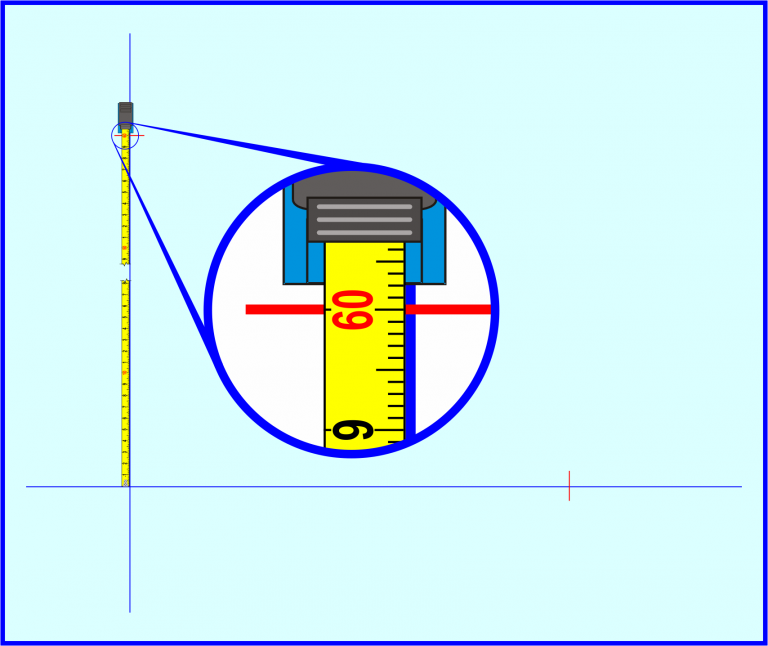
On the perpendicular line (the return of the wall) place the Hook-End of the tape measure on the baseline where it crosses the perpendicular line, then extend the tape blade so that you can mark 600mm on the perpendicular line.
On the baseline (the face of the wall) place the Hook-End of the tape measure on the perpendicular where it crosses the baseline, then extend the tape blade so that you can mark 800mm on the baseline.
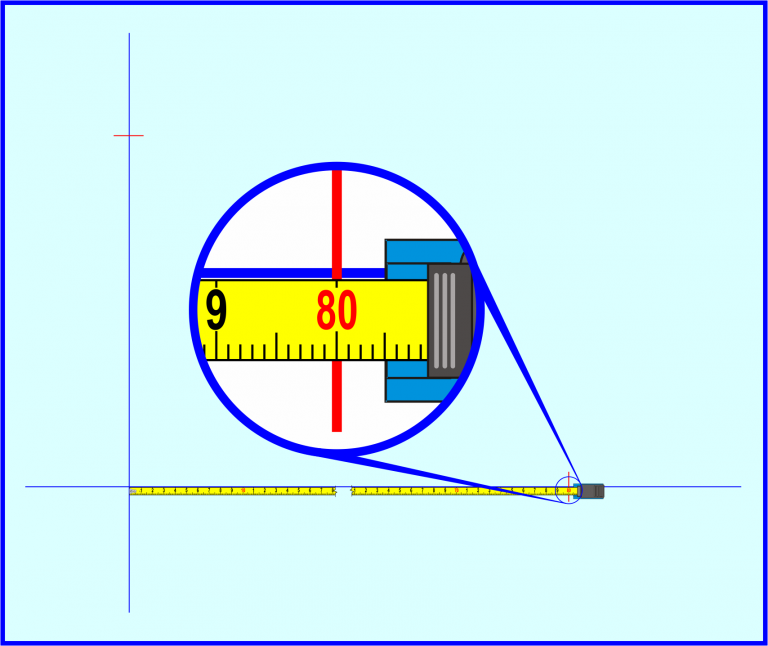
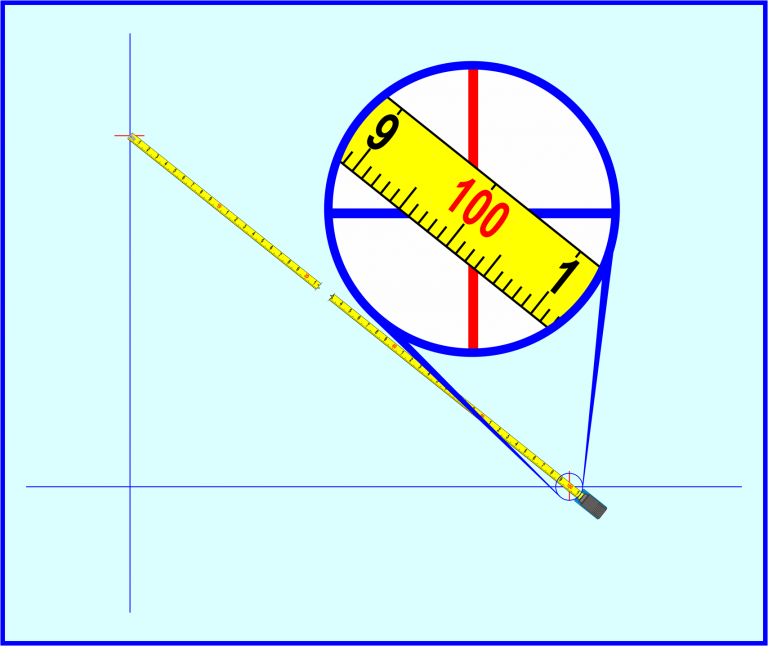
Extend the tape blade so you can see 1000mm on the blade then lock the blade in position.
Place the tape measure between the two marks on the baseline and perpendicular marks then read off the distance between the marks.
The distance should be 1000mm which will mean that you set out a 90° angle, if the measurement does not read 1000mm then you need to adjust the perpendicular line and recheck.
When setting out a building is good practice to place a course of bricks to gauge along the length of the wall in Dry Bond which is laying bricks without mortar on the bed and perp joints to the co-ordinating size of 225mm which is the working size of a bricks with perp joint.
Generally, architects will design Buildings with the aid of a brick dimension table to minimise cuts during construction.
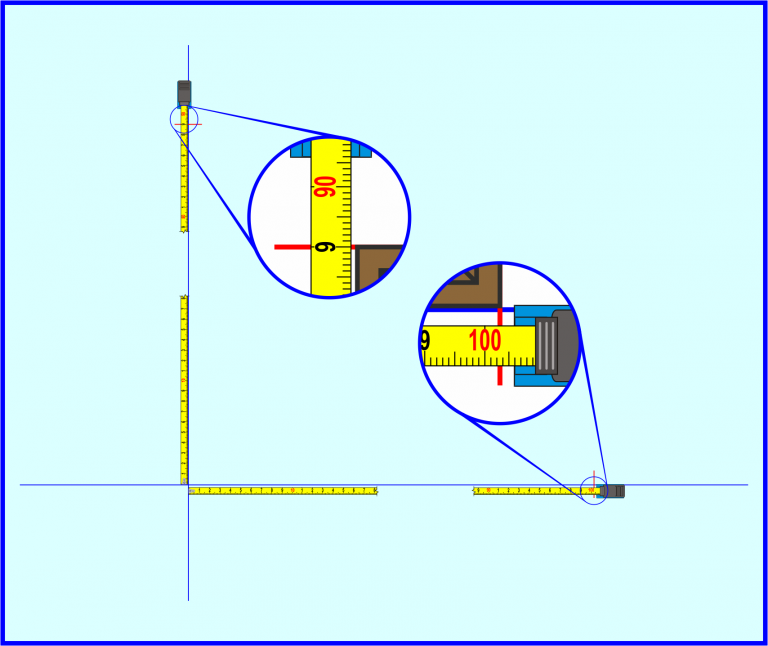
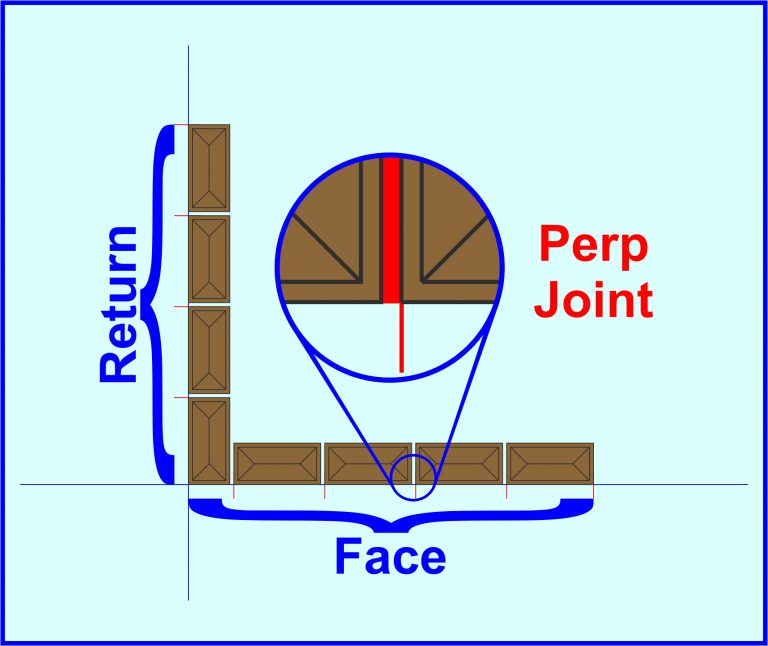
The first course of bricks consists of 8 bricks in total, the return consists of 4 bricks which is 890mm and the face consists of 4 ½ weeks which is 1002.5mm.
You will need to adjust all the bricks so that all perp joints are the same size but conform to the Brick Gauge, so that the length of the brick plus the mortar joint is 225mm.
After completing the above exercise you need to mark the start of each perp joint on the return and face of your wall.
For additional information on this topic click on the links below:
Dimensions and Tolerances in Bricks
Brick Lines
Checking Levels For Accuracy
Level and Straight Edge
The half brick wall has 60 bricks per 1m²
One brick wall has 120 bricks per 1m², normally a garden walls.
½ brick wall is referred to as an outer or inner leaf when constructing a cavity wall.
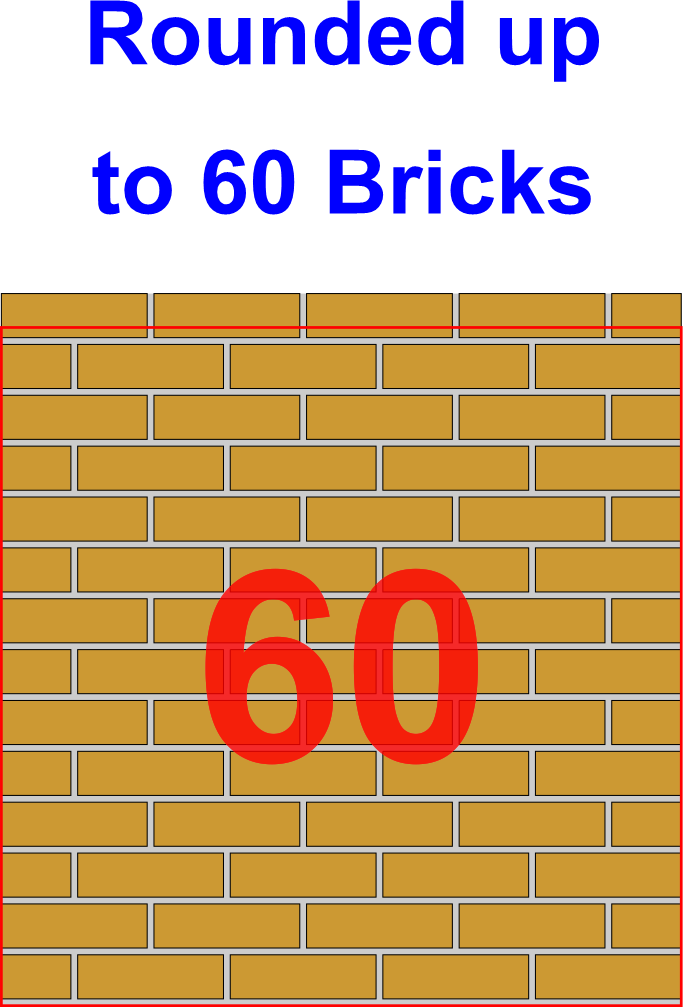
Red Square equals 1m²
For additional information on this topic click on the link below:
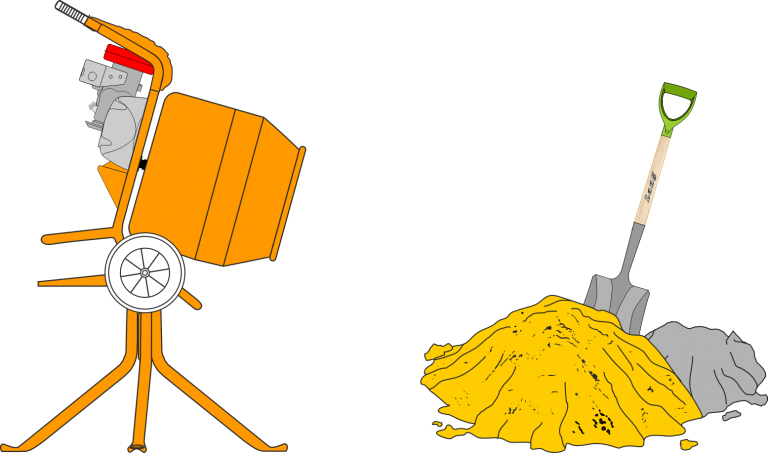
For ease of mixing the area should be flat, hard, e.g. Concrete, mixing board, and free from dust and other debris.
It is important that stones are not mixed in with mortar as these can affect the true laying of bricks and blocks.
Mortar will stain the surface over which they have been mixed even when the area is washed down after the mixes are used.
An area should be chosen where stains do not matter.
If possible, the area should also be close to where the work is taking place and/or near the stored materials.
The area should also be large enough to enable you to use all the tools and equipment Safely.
For additional information on this topic click on the links below:
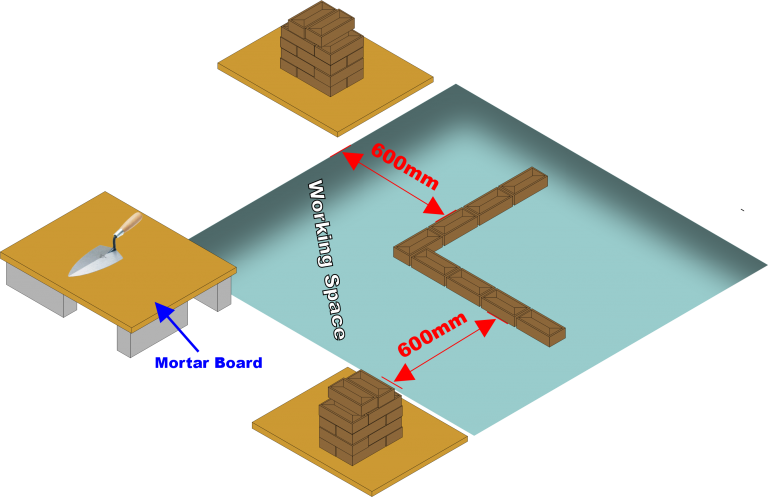
loading out the bricks and mortarboards alternatively running along the face of the wall Leaving 600mm for the working area from the face of the wall to the materials.
Bricks stacked frog up and with the face of the brick away from the mortarboard
If you’re on the first lift which is from horizontal DPC level then you need to think about putting boards underneath of the brick stacks or blocks, to stop them absorbing water from the ground or contaminating the bricks or blocks.
Mortarboards normally 600x600mm and are placed onto concrete blocks on edge and the boards are whetted down so they don’t absorb all the moisture from the mortar mix which will weaken the mix and workability.
Bricks which are adjacent to the mortarboards must have the face of the brick facing away from the spot board this ensured that no mortar is splashed onto the face of the brick.
At the end of the day, all mortarboards are cleaned and placed on top of the brick or block stacks to protect them from the rain.
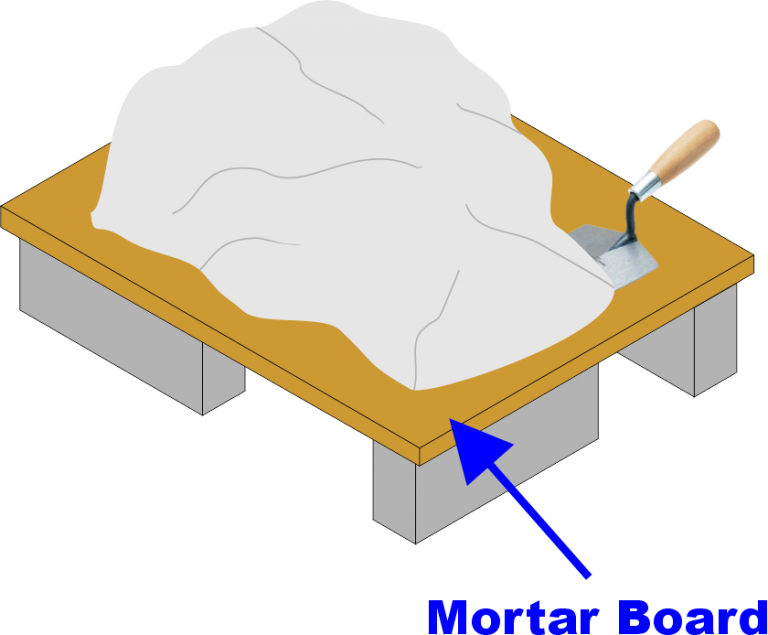
Now you set up your workstation and you’ve mixed up your mortar to the right consistency, wet the mortarboard before loading mortar onto the centre of the board.
Some bricklayers like a full mortar board enabling them to cut into the mortar and pick up the mortar in pasty-shaped.
Alternative methods is to use your trowel and pull away a small amount of mortar in a sawing action, roll the mortar along the board until it looks like a sausage.
The following series of images was created in Adobe Animate previously known as flash, which my first website was designed around, now I’m in the process of converting all previous assets into vector animations.
If you wish to have a free trial click on the link below
The following series of images was created in CorelDRAW which is vector-based designing software, all of the artwork you see on this website was created in this software.
If you wish to have a free trial click on the link below
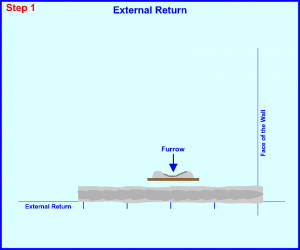
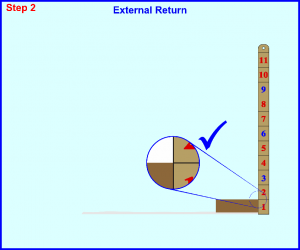
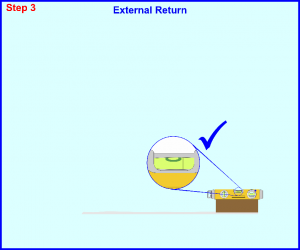
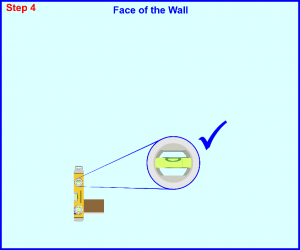
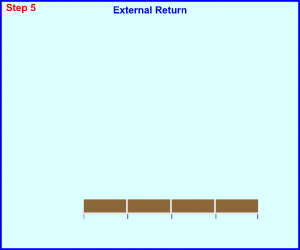
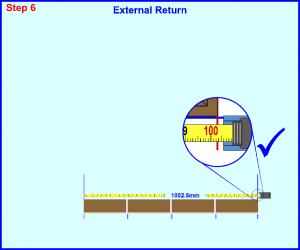
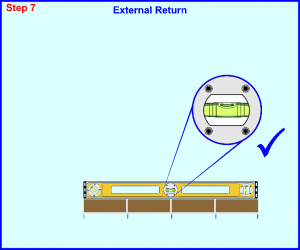
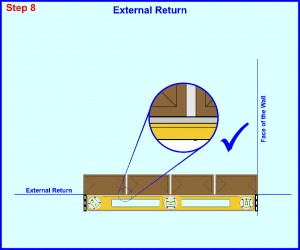
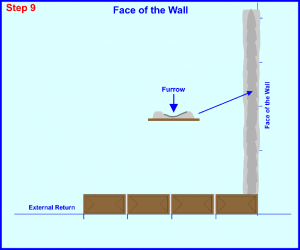
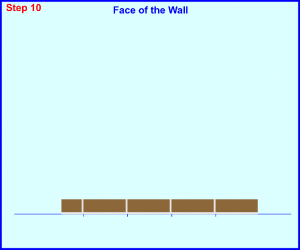
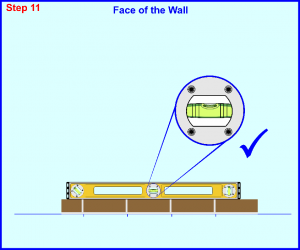
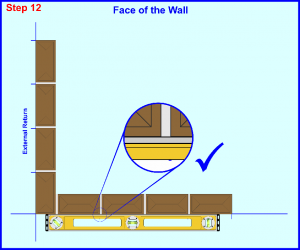
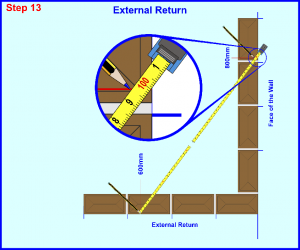
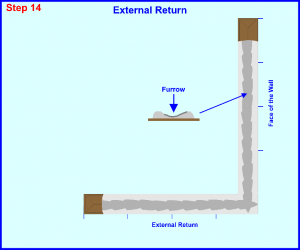
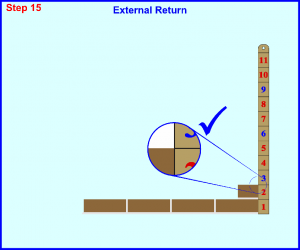
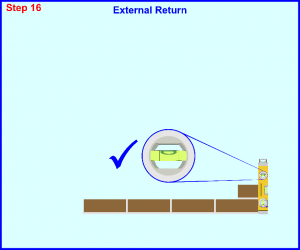
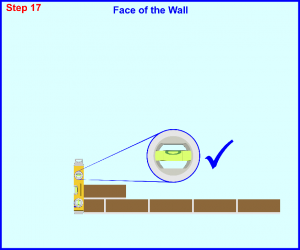
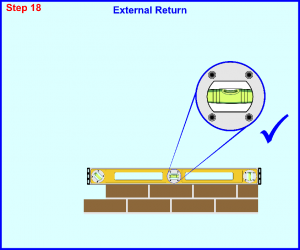
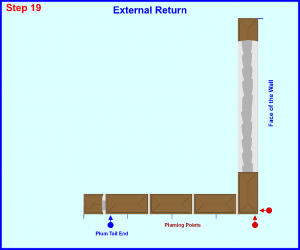
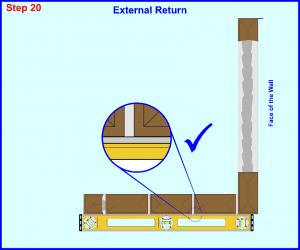
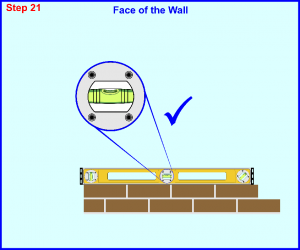
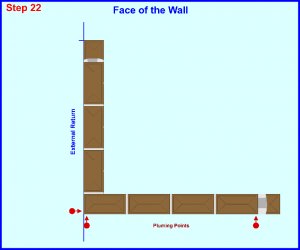
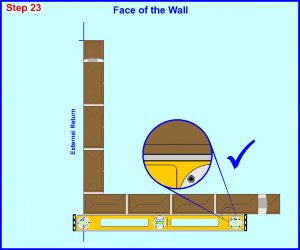
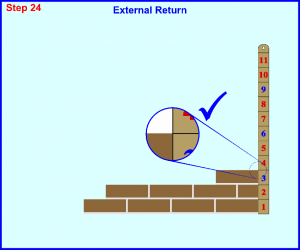
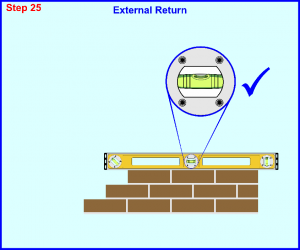
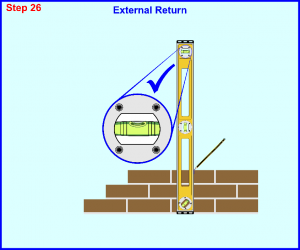
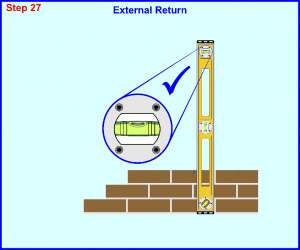
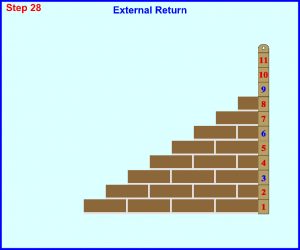
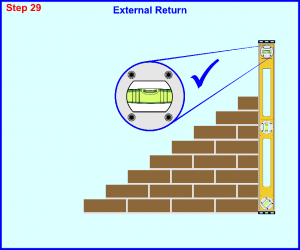
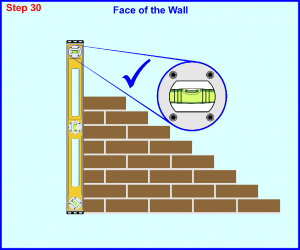
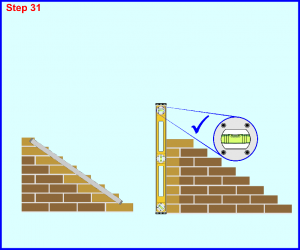
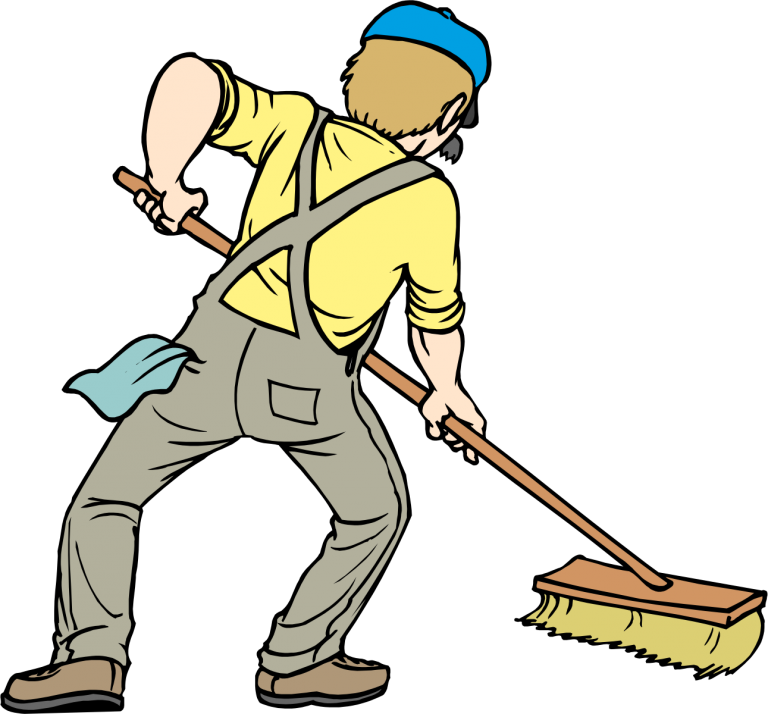
Remember to remove surplus mortar that has been squeezed out from the joints.
Don’t forget to wear your Personal Protection Equipment when needed, you still being assessed as you pack away your tools and equipment.
Check that the face of the brickwork is flat with the straight edge and that the perpends are in line.
Fill any gaps in the joints with mortar, using a pointing trowel to press the mortar into the joint.
When the mortar has dried out sufficiently point up the brickwork with a jointing tool.

Assessor Checking Work
Clean your working area off surplus Materials and Debris on completion of the job.
Clean all Tools & Equipment ready for reuse.
Double-Check your work and your area against the assessment criteria before calling over the assessor who will then ask you questions on this assessment.
This task can be achieved at Pass, Merit or Distinction within the tolerances in the Grading Criteria.
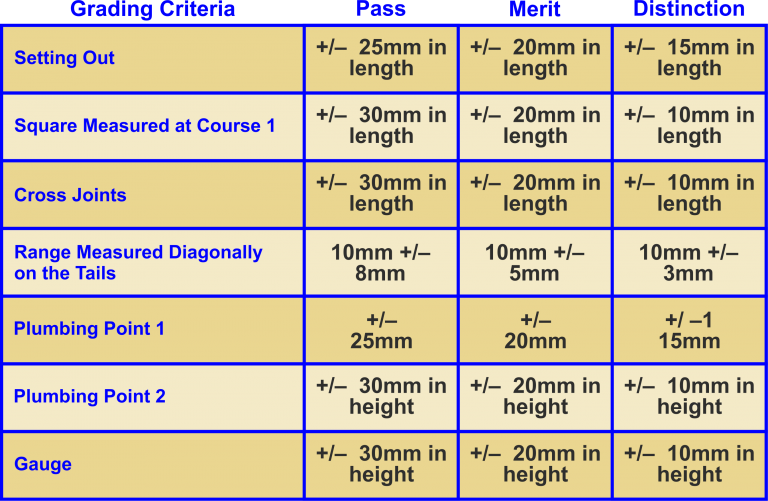
Grading Criteria Unit_119